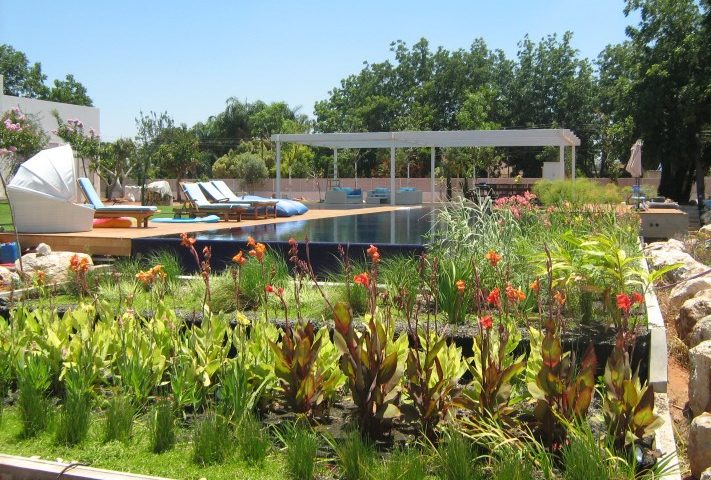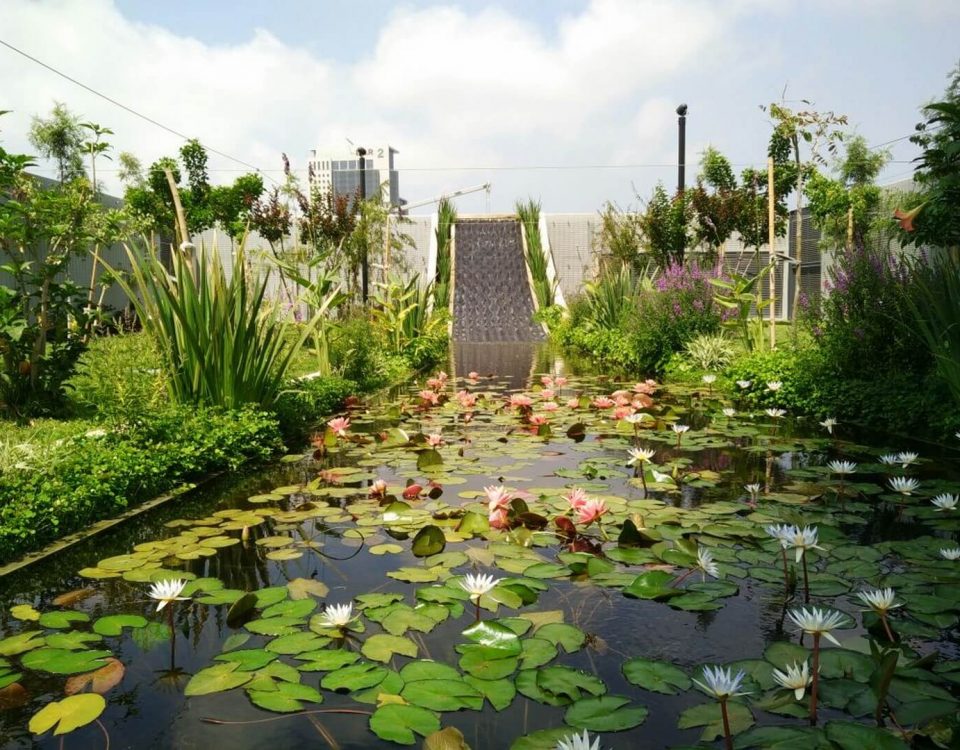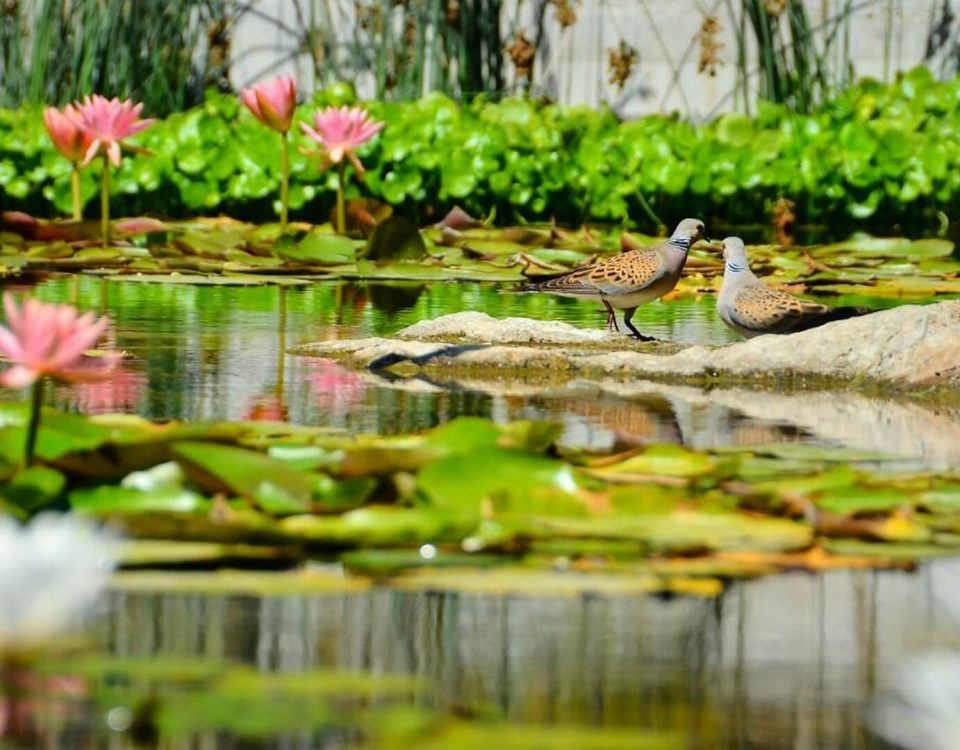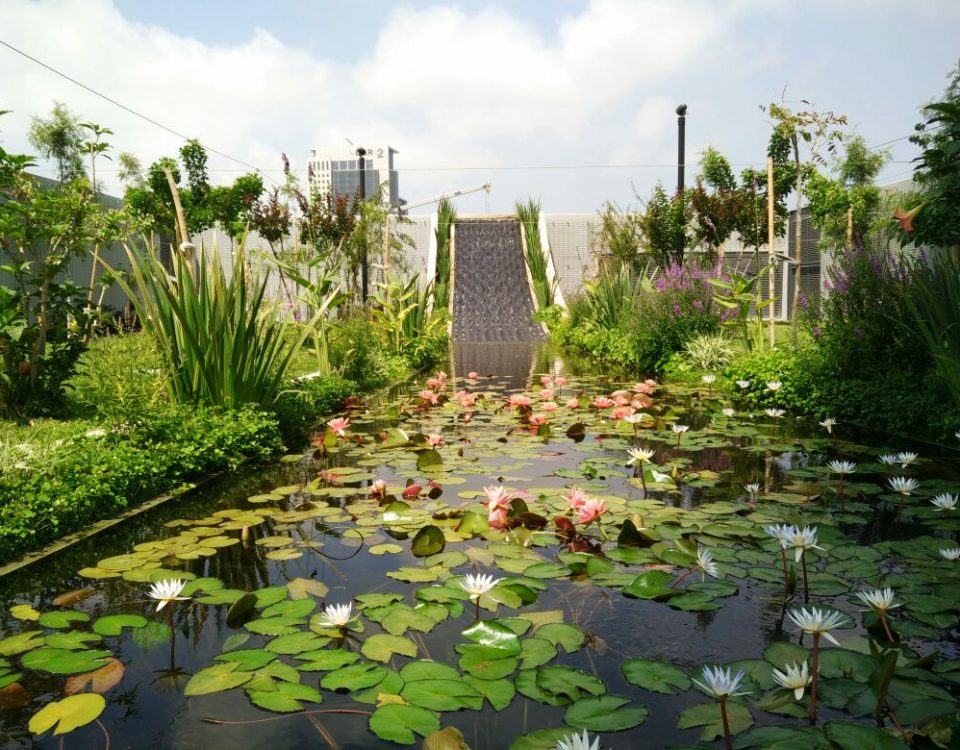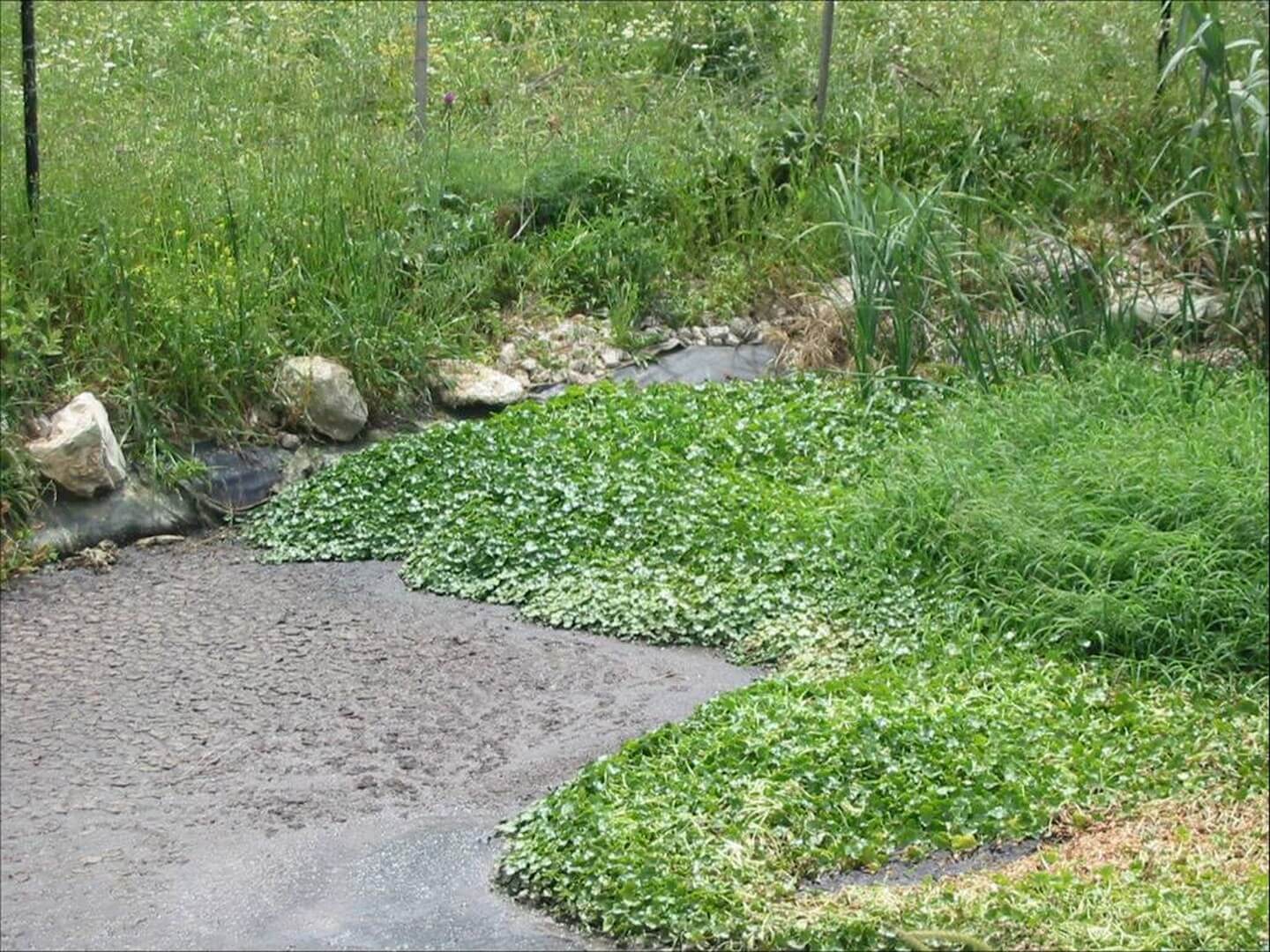
טיפול בשפכי רפתות בשיטת המב"ט
ספטמבר 21, 2016
הוצאת זרחן על ידי CONSTRUCTED WETLANDS
אוקטובר 24, 2016CONSTRUCTED WETLANDS – A full and sustainable solution for pollution and water shortage in arid zones
The Middle East is facing severe water problems:
- Shortage of water
- Irrigation with low quality purified wastewater that destroys the land and reduces production
- Danger of pollution of drinking water sources
- Wastewater treated to varying degrees runs into the rivers and destroys their natural balance and life
- Salination of wells and water reservoirs
In arid zones these issues are much more severe. Very often the source water is already saline, and keeping the water in reservoirs causes further salination. On the other hand, the need for water and green spaces is far greater.
CONSTRUCTED WETLANDS are designed to give a renewed answer to these issues.
In order to keep our planet in a reasonable state we have to use what we produce. In the past farmers used human and animal waste for agricultural use, and no residue was left. In modern life we aspire to do the same, but it takes more effort.
Constructed Wetlands enhance natural processes, and combined with today's know how in engineering, chemistry and biology, are a powerful system for wastewater treatment.
- Constructed Wetlands are able to cope with a large variety of pollutants including heavy metals, salts, Boron, Hydrocarbons, Pathogenic microorganisms, and of course BOD, COD, TSS and other standard parameters for measuring wastewater quality. The water in constructed wetlands can support life in reservoirs, rivers, or on land
- Constructed Wetlands are particularly useful in cases of special wastewater, which conventional systems may have difficulty coping with. This includes industrial effluents with heavy metals, dairy farms, and gas stations.
- Properly designed Constructed Wetlands are a highly stable system that endure fluctuations and unforeseen events without collapsing, ensuring the safety of end users.
- The system can treat sludge as well, with a dual outcome of both Class A compost as well as good quality water.
- When properly designed, the system carries no environmental nuisances such as odors or mosquitoes. The constructed wetland is a beautiful green area appealing to birds and other wildlife that people come to enjoy. The system can be incorporated into existent parks and bird and wildlife sanctuaries.
- Constructed Wetlands can be creatively integrated into urban areas to improve quality of life for neighborhood residents.
- Constructed Wetlands are the ideal system for remote places where connection to a central wastewater plant is not possible, and a maintenance-free system is a must.
- The building costs of Constructed Wetlands are slightly cheaper than most other systems and require almost no maintenance. Ideally, constructed wetlands require no energy and there is no addition of chemicals.
In the long run Constructed Wetlands are both the most cost effective and efficient system available to treat the global water crisis. Properly designed Constructed Wetlands get better with the years and will serve for much longer than any other system. A Constructed Wetland is a self-sustaining system that offers a solution with an added value to the environment. A system we can live with, and live by.
The people of Kibbutz Lotan considered these issues when they asked Ofra Aqua to design a Constructed Wetland system for the Kibbutz.
Lotan, located in Israel’s Southern Arava Desert, is an ecology conscious community with a focus on sustainable development. It is also home to a large and significant bird reservation. With an awareness of Lotan’s governing ethos, Ofra Aqua designed a self-sustaining system that can also provide environmentally friendly water for bird ponds and irrigation.
The choice of Constructed Wetlands for such an arid zone is not self-evident. Traditional CW using Phragmites Australis does not fit due to the high rate if evapotranspiration and consequent salinity. Constructing a CW system in the desert requires special characteristics. Ofra Aqua has led vast experimental efforts to identify plants, substrates and flow systems that will result in actual reduction of Chlorides and Boron levels in these harsh conditions. At the experimental site, a source of saline water was used (1,200 and 3,000 mg/l of Chlorides), and within 2 years the beds had achieved a significant reduction in salinity levels. (Graph) As expected, high salinity was measured in the control ponds.
The knowledge gained from our research was put to the test when in the design of the Neot Smadar water reservoir, situated in the Arava Desert. Special wetland beds were constructed to surround the shores of this 27,000sq.m pond. The water is pumped and distributed through these beds.
The reservoir is used for irrigation, and as a fish farm. Although the water source is slightly saline, even when combined with the addition organic load from the fish, the water at the outlet is better than in the inlet and fit irrigation use. The Neot Smadar pond now attracts many bird species not seen in the region for many years, and as a result has established itself as an important bird watching site.
Both The Lotan system and the Neot Smadar WWTP were designed using the following guidelines:
- The system is designed for minimum water loss by evapotranspiration, choosing suitable plants, substrates and flow systems.
- A poly-culture system is used to enhance stability and effectiveness of the system.
- Both human and animal needs are taken into account. The system provides shelter, water and food for wild animals (especially birds) and a green tranquil place for human recreation. Esthetic considerations are a part of the design concept. The wastewater system is incorporated into the bird watching park and its bird pond. Trails, watchtowers, and sheds are incorporated in the design.
- The design ensures no odors, mosquitoes or any other nuisance in the system. Heavy organic load from the dairy farm is pre-treated on the farm premises to avoid odors at the main system.
The Constructed Wetlands system is self-sustaining and requires little maintenance. While it does require observation and monitoring as well as some gardening for esthetic and tourism purposes, gardening is not required for the system to function. Its effectiveness and efficiency when coping with a diverse range of pollutants, together with its seamless integration into the environment, make Constructed Wetlands the solution for our times. The Ofra Aqua system has proved its effectiveness in arid Zones with their special requirements.

